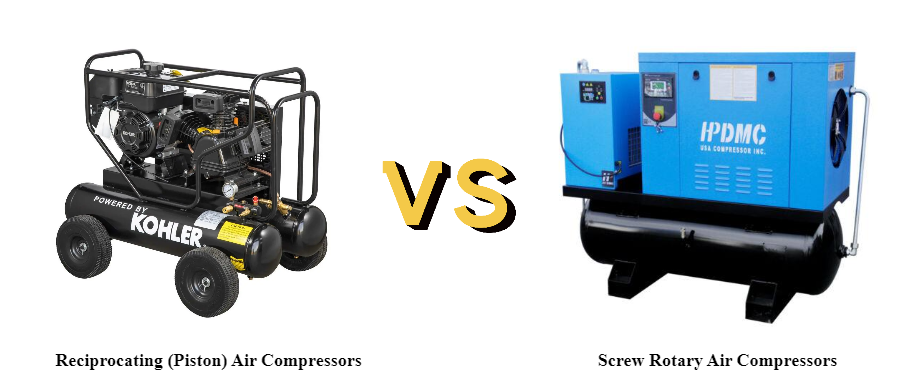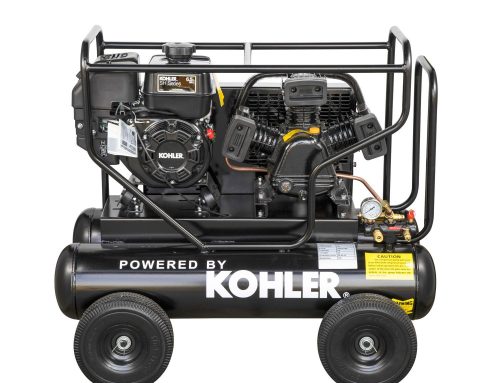Reciprocating (Piston) Air Compressors Screw Rotary Air Compressors
When it comes to powering industries and getting things done, air compressors are the unsung heroes behind the scenes. Among the many types available, two heavyweights stand out: the Screw Rotary Air Compressor and the Reciprocating (Piston) Air Compressor. In this exhilarating exploration, we will unveil their differences, their strengths, and their undeniable impact on the world of industry.
The Battle of Principles
· Screw Compressor: Picture a dynamic duo of intertwined rotors working tirelessly to compress air and gas. They dance in perfect harmony to deliver a continuous flow of compressed power.
· Reciprocating Compressor: Enter the piston – a true workhorse. It moves back and forth in a cylinder, compressing air with its rhythmic motion. It’s like the beating heart of the industry.
The Clash of Features
Now, let’s dive into the arena and witness the clash of features:
1. Efficiency: In the red corner, Screw Compressors reign supreme. They thrive in continuous operations, providing relentless power. However, our contender in the blue corner, the Reciprocating Compressors, may face efficiency losses when stepping up to larger sizes.
2. Size: Screw Compressors strut their stuff with a compact physique, making them the darlings of applications with limited space. Meanwhile, Reciprocating Compressors, though mighty, tend to flaunt a bulkier frame.
3. Maintenance: It’s a battle of strategy here. Screw Compressors demand less frequent but potentially costlier maintenance. On the flip side, Reciprocating Compressors require more regular check-ups, but the cost tends to play nicely with your budget.
4. Noise: In the world of noise pollution, Screw Compressors are the silent guardians. Their hushed operation is music to the ears. Reciprocating Compressors, while no slouches, may make a bit more noise.
5. Lifespan: In the longevity showdown, it’s anyone’s game. Both contenders can go the distance with proper care, but Reciprocating Compressors may find themselves replacing parts more often.
6. Cost: Ah, the financial tango. Screw Compressors come in swinging with a higher initial cost. Still, they can prove their worth over time. Reciprocating Compressors enter the ring with a lower initial price but may have higher maintenance expenses down the road.
Best Use Cases
· Screw Compressors: These powerhouses are the knights of continuous, large-scale operations. They march boldly into industries where efficiency and reliability are kings. Think manufacturing and automotive, where the demand for a constant flow of compressed air never sleeps.
· Reciprocating Compressors: Our versatile contenders find their stride in intermittent tasks and smaller applications. They are the go-to choice for workshops, home garages, and situations where space is at a premium.
The Grand Finale
In the epic conclusion of this battle, we find that the choice between Screw Rotary and Reciprocating Air Compressors hinges on operational needs, budget considerations, and space constraints. It’s a decision that requires a keen understanding of your specific needs, whether you’re powering a colossal manufacturing plant or working in the cozy confines of a home workshop.
In the world of air compressors, each type has its place and purpose, offering distinct advantages that cater to various applications. So, when the time comes to choose your champion, remember that it’s not about finding the “better” compressor; it’s about selecting the one that’s perfectly suited to conquer your unique industry battlefield.









